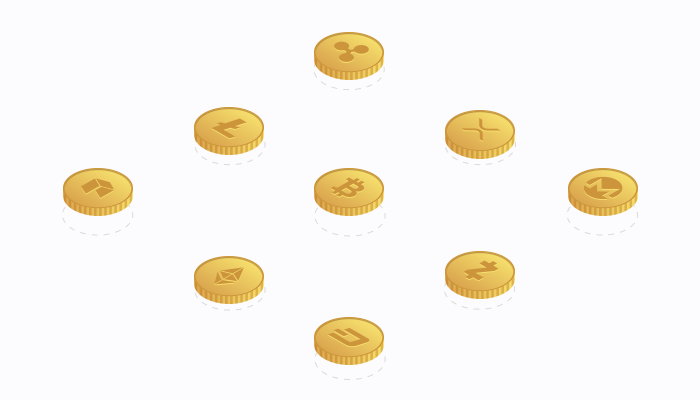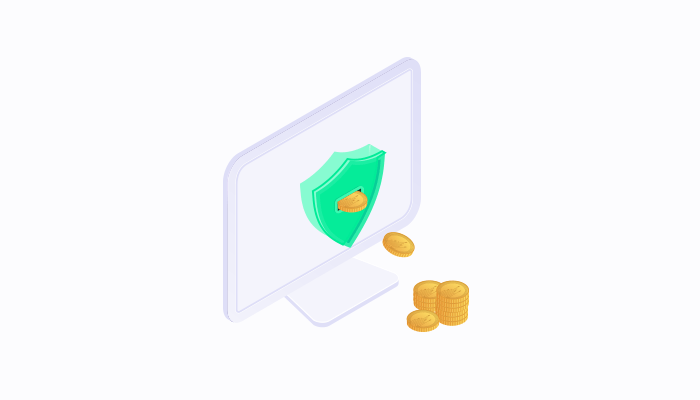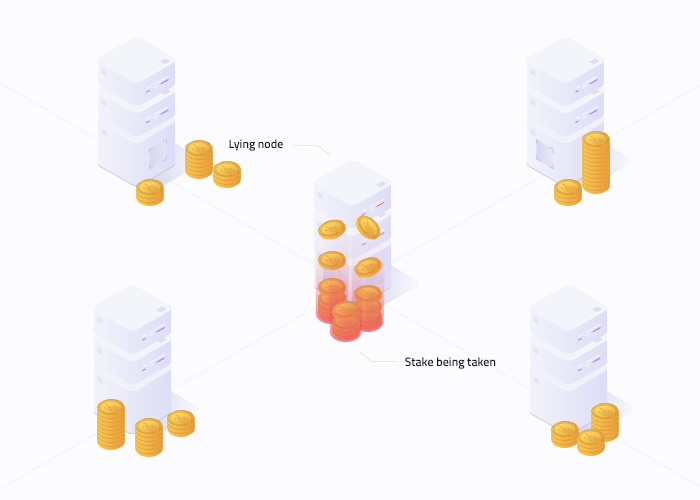By
George Spasov
March 28, 2020
8 Min Read

Let’s refresh our blockchain knowledge and see what we covered in the previous parts (see all below).
The blockchain is a network of computer-accountants called nodes. The nodes keep track of identical copies of a ledger. The ledger consists of transactions bundled in blocks. The blocks are linked together forming a chain – blockchain. The transactions are cryptographically signed by the person spending some of their balance. “People” in the ledger are identified by their public key (known as address), while transactions are signed via their private key. The public-private keys pair is known as a wallet.
There is no central node in the network and all the nodes are equal. They all relеy to each other information about the transactions happening and synchronize their copies of the ledger with each other. This communication process is called gossiping.
The goal of the network is to reach an agreement about the latest valid version of the ledger and synchronize their own copies in accordance with it. The nodes are given economic incentives to act correctly and guard the network, while also being given economical punishments for trying to fraud/cheat the system. This balance between incentives and punishments is known as crypto-economics.
The process of reaching consensus is known as “consensus algorithm”. The different consensus algorithms have different crypto-economic incentives and punishments. In the previous article, we outlined how the various consensus algorithms differ and how they offer security. While the security in the consensus algorithm is maintained via various forms of punishment, most of the consensus algorithms also incorporate a form of reward for correct behavior. This reward is in the form of cryptocurrency, the topic of this article.
The cryptocurrencies are a digital representation of value. They are much like the money you have in your physical wallet but digital. Much like the physical money, they are given to you as a representation of the value you’ve created in the world.
There are two types of cryptocurrencies – coins and tokens. Although part of the same family, coins, and tokens vary massively – both in the way they are used and in the way they are produced.

Blockchain coins share a lot of similarities with the physical money. Similarly, the physical money is given to you for bringing value to someone – your employer, your business, your clients – the coins are given to you for correct behavior in the network. What is deemed a correct behavior varies based on the specific consensus algorithm used?
The accountants-network then keeps track of the coins issued for correct behavior. As an additional incentive for the accountants to keep up the good work going, the users that make use of the network, are paying a small service fee to them. This fee is paid in the form of cryptocurrency coins.
The cryptocurrency coins can be safely transferred between users, and the blockchain network will make sure that the transfers are valid according to the rules and secure.
Let’s see how and why the blockchain coins are issued in the [networks implementing the] major consensus algorithms.

In the proof of authority, the guardians of the consensus algorithm are the authority nodes. The authority nodes receive a block reward in exchange for creating, verifying and including the blocks in the chain. As the proof of authority algorithm is somewhat centralized, the cryptocurrency reward does not add very much value to the system. This is why you won’t see popular blockchain coins based on a PoA network.

In the proof of stake, the consensus is guarded by block producers. The block producers receive back reward in the form of cryptocurrency coins for producing a block. In addition, the block producers are required to stake – provide collateral that gets taken away from them in case of incorrect behavior. Therefore, in a PoS network, the coins serve a twofold purpose. On one hand, it serves as a reward for correctly producing a block, and on the other hand, it serves as a penalty factor for wrongdoers. Moreover, in some networks, if a node is dishonest, the stake that gets taken away from them, gets given to the node that has proven the dishonesty of the wrongdoer. This acts as one more incentive to secure the network.
The most famous example of such a coin is the EOS coin in the EOS network.

In the proof of work consensus algorithm, the correct behavior that gets rewarded by cryptocurrency coins is the production of a block of transactions. The node (miner) that produces a correct block that gets included in the network receives a block reward.
As a slight similarity to the proof of stake, there is a factor of a monetary loss of dishonest nodes. This loss is represented by the time and electricity spent by the wrongdoer. To put it simply, you would do a lot of work, and if your behavior is incorrect all this work will go in vain.
The two most famous examples of PoW coins are the Bitcoin and Ethereum cryptocurrencies. Both are given to the block producers (miners) when the produced block becomes part of the chain. This is how these blockchain coins get created and get into circulation.

In order to make sense of what tokens are, we’d need to first learn what smart contracts are. In the next part, we will review this powerful tool of the blockchains and how it will shape the future of many businesses and technologies. More about smart contracts development you can read on our services page.
Useful links

